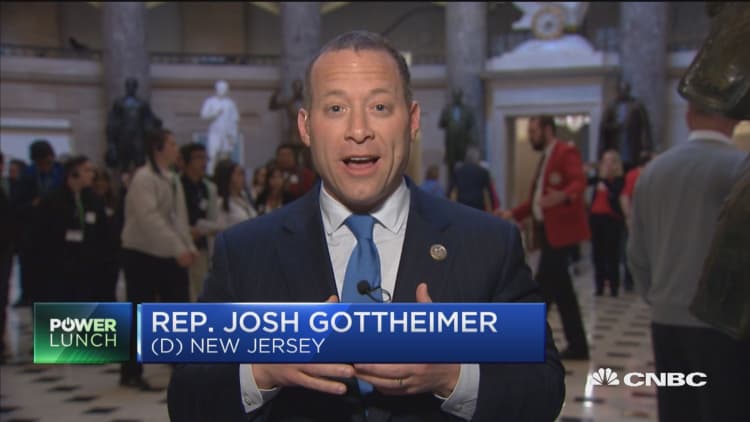The $21 trillion debt the U.S. has amassed on its balance sheet isn't weighing on the minds of credit rating agencies.
Moody's and Fitch in recent days have reaffirmed the nation's top-notch credit standing, reasoning that even with the massive pile of IOUs, the nation has sufficient resources to keep its standing.
"The affirmation of the US' Aaa rating reflects the US' exceptional economic strength, the very high strength of its institutions and its very low exposure to credit-related shocks given the unique and central roles of the US dollar and US Treasury bond market in the global financial system," Moody's analysts said in a report Wednesday afternoon.
Those relatively glowing remarks come even as the debt tally continues to rise.
Total public debt outstanding was at $21.06 trillion as of Tuesday, a 2.8 percent rise since the beginning of the year. Of that total, $15.34 trillion is owed by the public.
There have been multiple warnings lately about the surging level — the Congressional Budget Office said the U.S. would be running a $1 trillion budget deficit within the next couple of years, and Federal Reserve Chairman Jerome Powell has said repeatedly that the nation is on an unsustainable fiscal path.

However, the ratings agencies say the country has sufficient buffers to withstand debt pressures.
"The U.S. sovereign rating is supported by structural strengths including the size of the economy, high per capita income, and a dynamic business environment," Charles Seville, senior director at Fitch Ratings, wrote in a report earlier this month. "While there has been a recent loosening in fiscal policy, Fitch considers debt tolerance to be higher than that of other sovereigns."
Both Fitch and Moody's reaffirmed "AAA" and "Aaa" ratings, respectively, both of which reflect top-quality debt.
However, Fitch did acknowledge that "the outlook for public finances has deteriorated since the last review." In particular, Seville cited the Tax Cuts and Jobs Act passed in December that slashed the corporate tax rate and reduced levies for millions of Americans.
The agency warned that total debt to GDP could hit 129 percent in a decade.
"Running a large deficit at this point in the economic cycle puts the public finances in a weaker position to confront any future economic downturn," Seville wrote.
S&P, the third major ratings agency, has not updated its outlook this year but in June reaffirmed its "AA+" long-term and "A-1+" short-term assessments for the U.S. The long-term rating is one notch below top, while the short-term is considered prime.
That long-term gauge is the same as it's been since 2011, when the agency delivered what was then a shocking blow by cutting its rating for U.S. debt. At the time, S&P cited political brinkmanship involved in the debt ceiling debates — a scenario that has played out multiple times since as warring factions in Congress have battled over spending.
WATCH: Congressman rips impact of tax cuts on deficit



